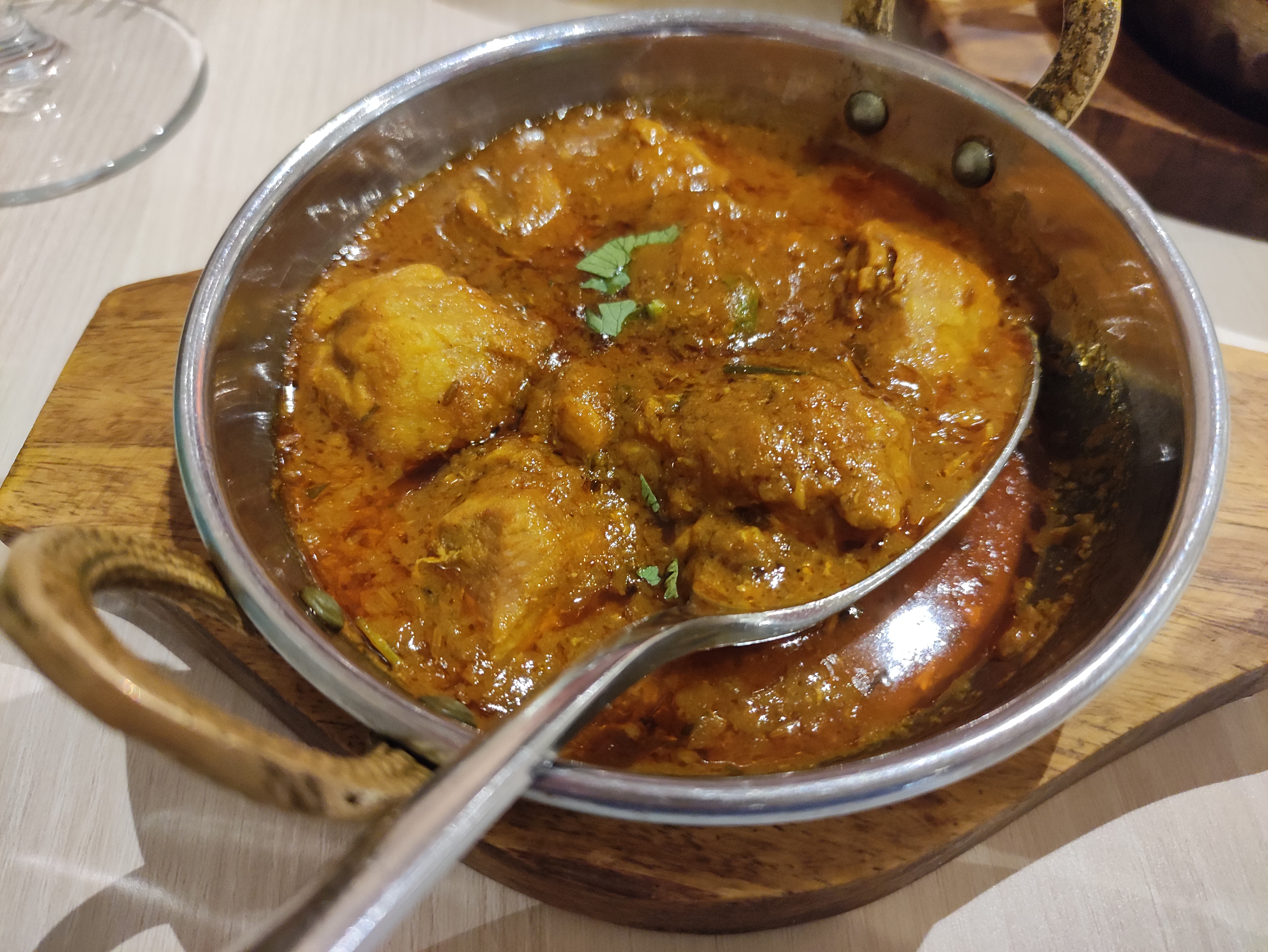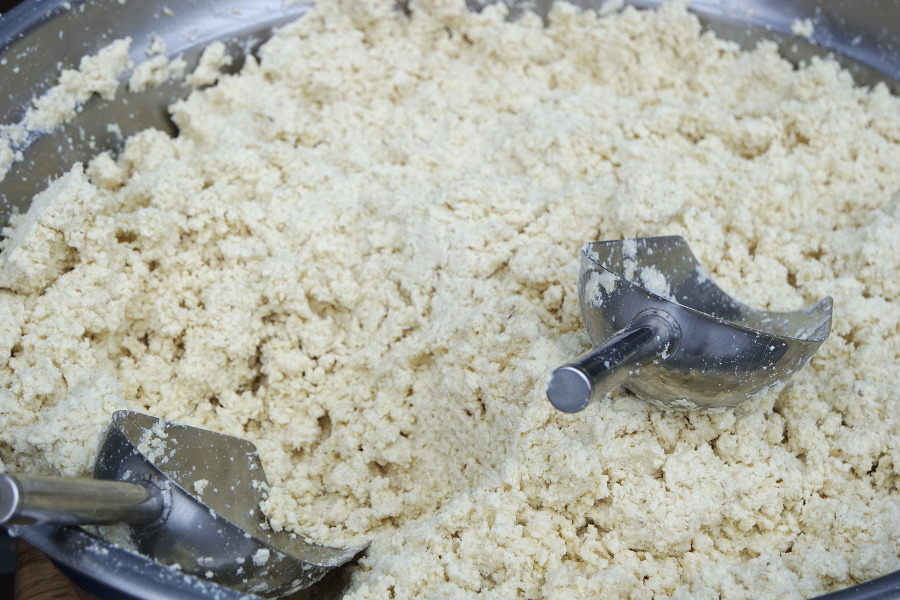|
Korokke
Korokke (; ) is a Japanese deep-fried '' yōshoku'' dish originally related to a French dish, the croquette. Korokke is made by mixing cooked chopped meat, seafood, or vegetables with mashed potato or white sauce, usually shaped like a flat patty, rolling it in wheat flour, eggs, and Japanese-style breadcrumbs, then deep-frying this until brown on the outside. History In 1887, the French croquette was introduced to Japan. It is thought that the ''korokke'' using mashed potatoes was invented because dairy processing technology had not been popularized in Japan at that time. The first mention of a "''kuroketto''" appears in cookery books from the Meiji era. ''Korokke'' can be found in almost every supermarket and convenience store in Japan and enjoyed for its taste and its low cost. ''Korokke'' became associated with typhoons in the 2000s, after a user on 2channel said they were eating some to prepare for an approaching typhoon, beginning a tradition that persisted on ... [...More Info...] [...Related Items...] OR: [Wikipedia] [Google] [Baidu] |
Patty
A patty is a flattened, usually round, serving of ground meat or legumes, grains, vegetables, or meat alternatives. Common ground meat used include beef, bison, elk, turkey, chicken, ostrich, and salmon. Patties are found in multiple cuisines throughout the world. The ingredients are compacted and shaped, usually cooked, and served in various ways. Etymology The term originated in the 17th century as an English alteration of the French word pâté, originally meaning a pastry with a meat filling, and later the filling itself. Terminology The term "patty" is used in many varieties of English, but less frequently in Britain and Ireland than in the United States. Merriam-Webster defines it as "a small flat cake of chopped food", Cambridge as "pieces of food, especially meat, formed into a thin, circular shape and then usually cooked". In some countries, patties may be called "discs." Similar-shaped cakes not made from ground beef may also be called "burgers": "fish burge ... [...More Info...] [...Related Items...] OR: [Wikipedia] [Google] [Baidu] |
Croquette
A croquette (; ) is a deep-fried roll originating in French cuisine, consisting of a thick binder combined with a filling, which is then breaded. It is served as a side dish, a snack, or fast food worldwide. The binder is typically a thick béchamel or brown sauce, mashed potatoes, wheat flour, or wheat bread. The binder may be mixed with or stuffed with a filling. Typical fillings include finely chopped meat, seafood, cheese, rice, mushrooms, and various vegetables, which may be combined with seasonings such as herbs and spices. Originally, they were filled with the leftovers from roasted chicken or broth soup made for the family; instead of throwing away the leftovers, they reused them by making croquettes. Sweet croquettes may use a pastry cream binder and be filled with fruit. Croquettes may also be formed in other shapes, such as disks, ovals, or balls. Etymology The word ''croquette'' is French, derived from ''croquer'', meaning 'to crunch'. In the 18th century, in E ... [...More Info...] [...Related Items...] OR: [Wikipedia] [Google] [Baidu] |
Soba
Soba ( or , "buckwheat") are Japanese noodles made primarily from buckwheat flour, with a small amount of wheat flour mixed in. It has an ashen brown color, and a slightly grainy texture. The noodles are served either chilled with a dipping sauce, or hot in a noodle soup. They are used in a wide variety of dishes. In Japan, soba noodles can be found at fast food venues like to expensive specialty restaurants. Dried soba noodles are sold in stores, along with ''List of Japanese condiments#Mentsuyu, men-tsuyu'', or instant noodle broth, to make home preparation easy. The amino acid balance of the protein in buckwheat, and therefore in soba, is well matched to the needs of humans and can complement the amino acid deficiencies of other staples such as rice and wheat (see protein combining). The tradition of eating soba arose in the Edo period. Etymology The word ''soba'' (蕎麦) means "buckwheat" (''Fagopyrum esculentum''). The full name for buckwheat noodles is ''soba-kiri' ... [...More Info...] [...Related Items...] OR: [Wikipedia] [Google] [Baidu] |
Yōshoku
In Japanese cuisine, refers to a style of Western-influenced cooking which originated during the Meiji Restoration. These are primarily Japanized forms of European dishes, often featuring Western names, and usually written in katakana. It is an example of fusion cuisine. History At the beginning of the Meiji Restoration (1868–1912), national seclusion was eliminated and the Meiji Emperor declared Western ideas helpful for Japan's future progress. As part of the reforms, the Emperor lifted the ban on red meat and promoted Western cuisine, which was viewed as the cause of the Westerners' greater physical size. ''Yōshoku'' thus relies on meat as an ingredient, unlike the typical Japanese cuisine at the time. Additionally, many of the Westerners who started to live in Japan at that time refused to touch traditional Japanese food ('' washoku''), so their private Japanese chefs learned how to cook them Western-style cuisine, often with a Japanese spin. The first recorded print ... [...More Info...] [...Related Items...] OR: [Wikipedia] [Google] [Baidu] |
Deep Frying
Deep frying (also referred to as deep fat frying) is a cooking method in which food is submerged in hot fat, traditionally lard but today most commonly Cooking oil, oil, as opposed to the shallow frying used in conventional frying done in a frying pan. Normally, a deep fryer or chip pan is used for this; industrially, a pressure fryer or vacuum fryer may be used. Deep frying may also be performed using oil that is heated in a pot. Deep frying is classified as a hot-fat cooking method. Typically, deep frying foods cook quickly since oil has a high rate of heat conduction and all sides of the food are cooked simultaneously. The term "deep frying" and many modern deep-fried foods were not invented until the 19th century, but the practice has been around for millennia. Early records and cookbooks suggest that the practice began in certain European countries before other countries adopted the practice. Deep frying is popular worldwide, with deep-fried foods accounting for a large por ... [...More Info...] [...Related Items...] OR: [Wikipedia] [Google] [Baidu] |
Curry
Curry is a dish with a sauce or gravy seasoned with spices, mainly derived from the interchange of Indian cuisine with European taste in food, starting with the Portuguese, followed by the Dutch and British, and then thoroughly internationalised. Many dishes that would be described as curries in English are found in the native cuisines of countries in Southeast Asia and East Asia. The English word is derived indirectly from some combination of Dravidian words. A first step in the creation of curry was the arrival in India of spicy hot chili peppers, along with other ingredients such as tomatoes and potatoes, part of the Columbian exchange of plants between the Old World and the New World. During the British Raj, Anglo-Indian cuisine developed, leading to Hannah Glasse's 18th century recipe for "currey the India way" in England. Curry was then spread in the 19th century by indentured Indian sugar workers to the Caribbean, and by British traders to Japan. Further exchange ... [...More Info...] [...Related Items...] OR: [Wikipedia] [Google] [Baidu] |
Ground Meat
Ground meat, called mince or minced meat outside North America, is meat finely chopped by a meat grinder or a chopping knife. A common type of ground meat is ground beef, but many other types of meats are prepared in a similar fashion, including pork, veal, lamb, goat meat, and poultry. Dishes Ground meat is used in a wide variety of dishes, by itself, or mixed with other ingredients. It may be formed into meatballs which are then fried, baked, steamed, or braised. They may be cooked on a skewer to produce dishes such as '' adana kebabı'' and '' ćevapi''. It may be formed into patties which are then grilled or fried (hamburger), breaded and fried ('' menchi-katsu'', Pozharsky cutlet), or braised ( Salisbury steak). It may be formed into meatloaves or pâtés and baked. It may also be used as a filling or stuffing for meat pies such as shepherd's pie and '' böreks'', and also as stuffing. It may be cooked and served as a hash or loosemeat. It may be made into mea ... [...More Info...] [...Related Items...] OR: [Wikipedia] [Google] [Baidu] |
Menchi-katsu
is a Japanese breaded and deep-fried ground meat patty; a fried meat cake.''Kenkyusha's New Japanese-English Dictionary'', The meat is usually ground beef, pork, or a mixture of the two. It is often served in inexpensive ''bento'' and '' teishoku''. Preparation The ground meat is mixed with chopped onion, salt, and pepper, and made into patties. Flour is applied on both sides of these patties. They are coated with beaten eggs, further coated with bread crumbs, and deep fried until golden brown. The bread crumbs, called ''panko'', are specially dehydrated and have a coarser texture than other bread crumbs. ''Katsu'' are usually served with Japanese Worcestershire sauce or ''tonkatsu'' sauce (a variant of Worcestershire thickened with fruit and vegetable purees) and sliced cabbage. Etymology ''Menchi'' and ''katsu'' are phonologically modified versions of the words " mince" and "cutlet". ''Katsu'' may refer to any deep-fried meat cutlet coated with flour, egg, and bread crumbs ... [...More Info...] [...Related Items...] OR: [Wikipedia] [Google] [Baidu] |
Japan
Japan is an island country in East Asia. Located in the Pacific Ocean off the northeast coast of the Asia, Asian mainland, it is bordered on the west by the Sea of Japan and extends from the Sea of Okhotsk in the north to the East China Sea in the south. The Japanese archipelago consists of four major islands—Hokkaido, Honshu, Shikoku, and Kyushu—and List of islands of Japan, thousands of smaller islands, covering . Japan has a population of over 123 million as of 2025, making it the List of countries and dependencies by population, eleventh-most populous country. The capital of Japan and List of cities in Japan, its largest city is Tokyo; the Greater Tokyo Area is the List of largest cities, largest metropolitan area in the world, with more than 37 million inhabitants as of 2024. Japan is divided into 47 Prefectures of Japan, administrative prefectures and List of regions of Japan, eight traditional regions. About three-quarters of Geography of Japan, the countr ... [...More Info...] [...Related Items...] OR: [Wikipedia] [Google] [Baidu] |
Okara (food)
''Okara'', soy pulp, or tofu dregs is a pulp consisting of insoluble parts of the soybean that remain after pureed soybeans are filtered in the production of soy milk and tofu. It is generally white or yellowish in color. It is part of the traditional cuisines of Japan, Korea, and China. Since the 20th century, it has been used in the vegetarian cuisines of other cultures. It is called ''dòuzhā'' or ''dòufuzhā'' in Chinese, ''okara'' in Japanese, and ''biji'' or ''kongbiji'' in Korean. Okara is the oldest of three basic types of soy fiber. The other two are soy bran (finely ground soybean hulls) and soy cotyledon/isolate fiber (the fiber that remains after making isolated soy protein, also called "soy protein isolate"). Production Okara is a food by-product from tofu and soy drink production.David B. Haytowitz and Ruth H. Matthews for the USDA Human Nutrition Information Service, December 198Agriculture Handbook No. 8-16. Composition of Foods: Legumes and Legume Pro ... [...More Info...] [...Related Items...] OR: [Wikipedia] [Google] [Baidu] |







